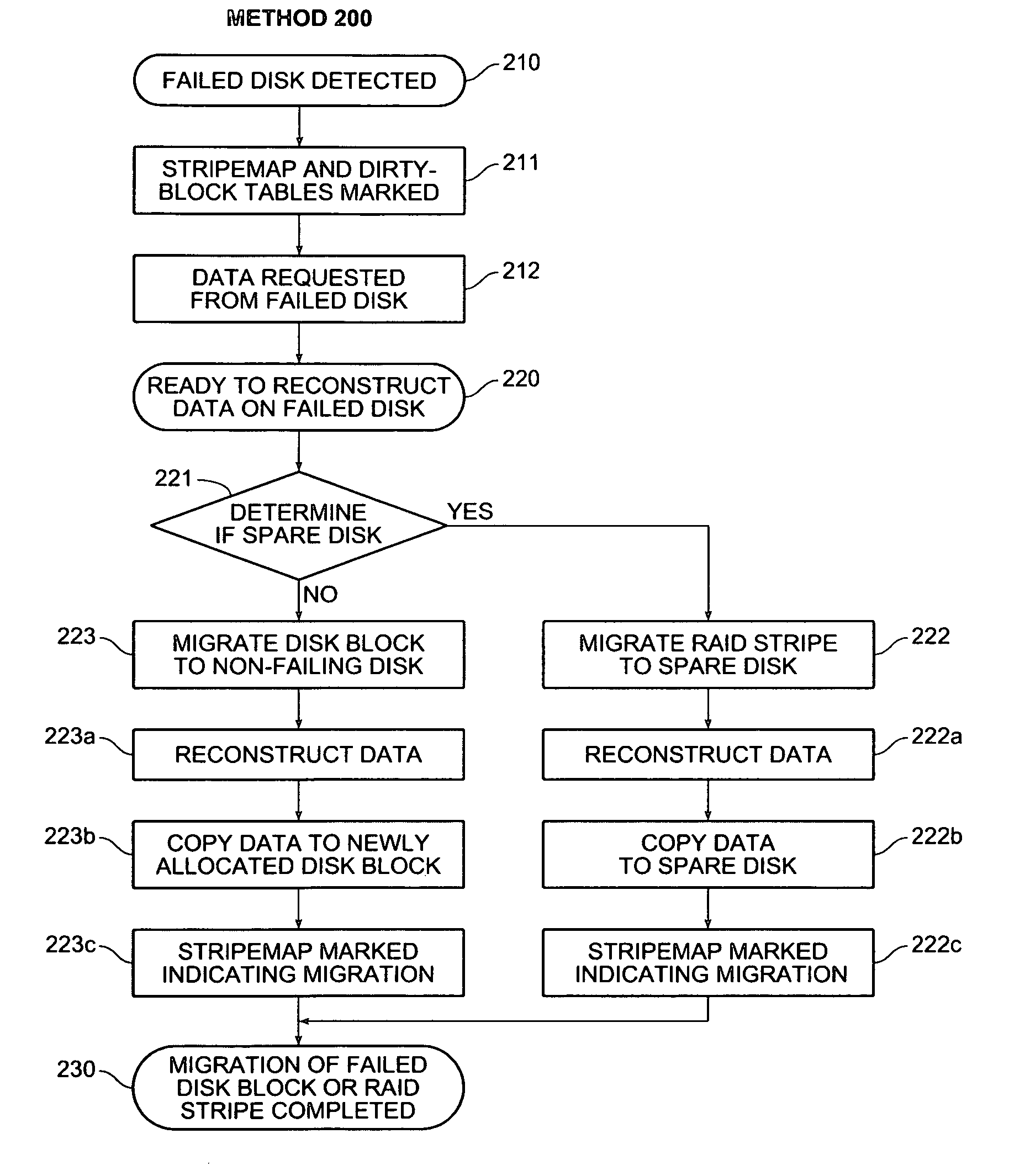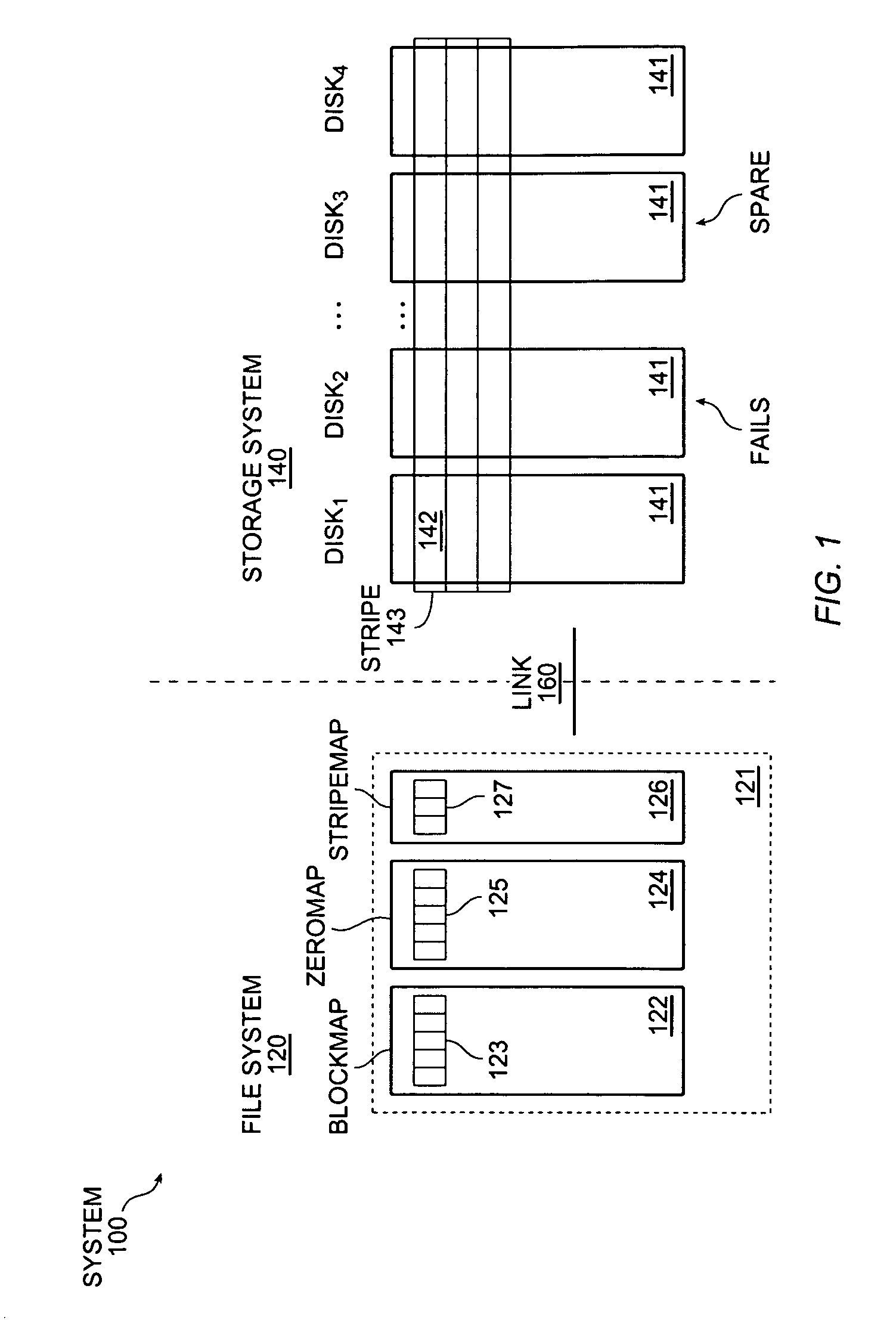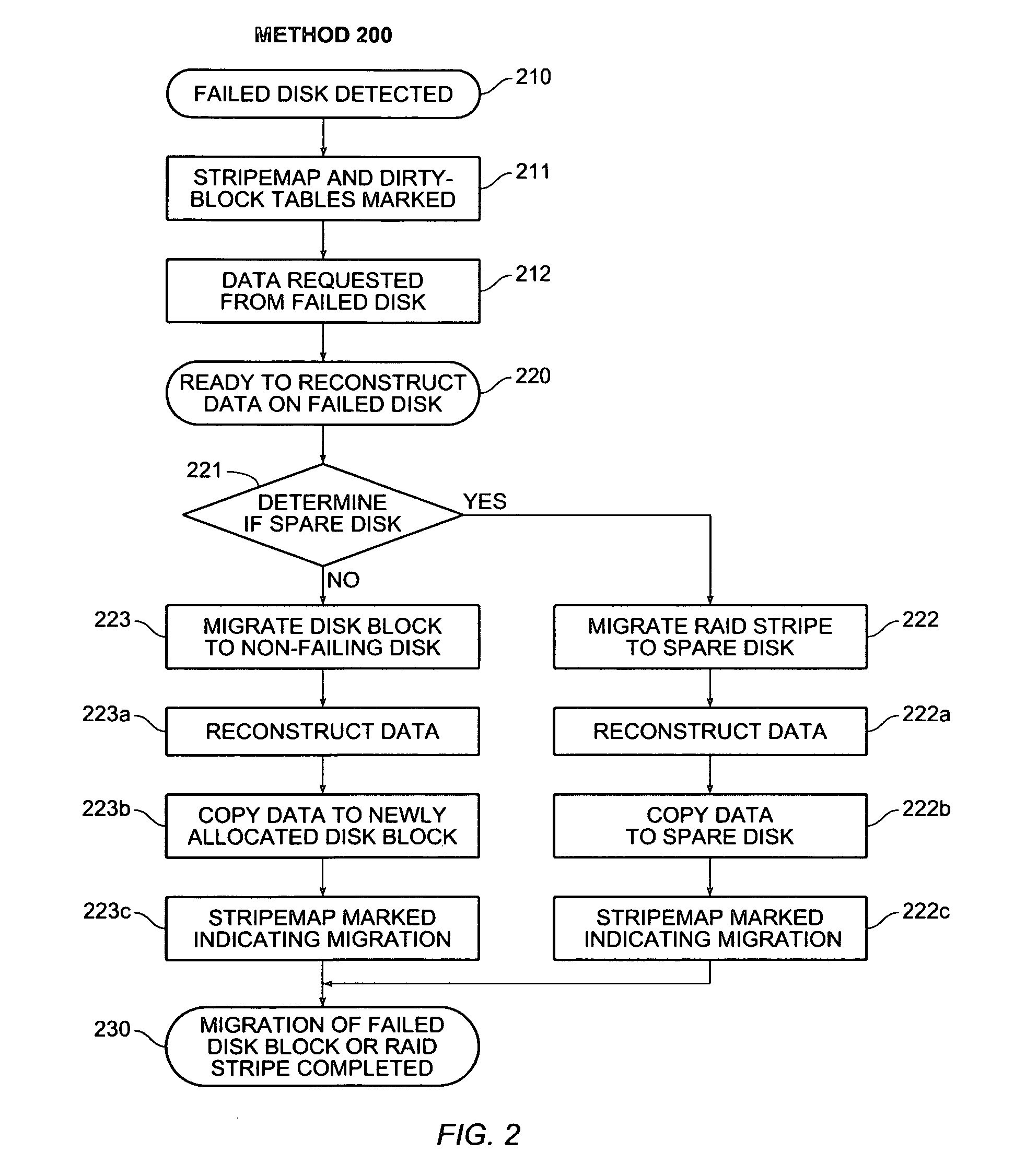Using file system information in raid data reconstruction and migration
- Summary
- Abstract
- Description
- Claims
- Application Information
AI Technical Summary
Benefits of technology
Problems solved by technology
Method used
Image
Examples
Embodiment Construction
[0018]In the description herein, a preferred embodiment of the invention is described, including preferred process steps and data structures. Those skilled in the art would realize, after perusal of this application, that embodiments of the invention might be implemented using a variety of other techniques not specifically described, without undue experimentation or further invention, and that such other techniques would be within the scope and spirit of the invention.
[0019]The following terms relate or refer to aspects of the invention or its embodiments. The general meaning of each of these terms is intended to be illustrative and in no way limiting.[0020]consistency point—In general, this refers to an identifiable set of data maintained by a file system that is self-consistent and can therefore be preserved on disk without worry that reference to data within the consistency point will result in file system errors. The phrase “consistency point” is intended to be broad enou...
PUM
 Login to View More
Login to View More Abstract
Description
Claims
Application Information
 Login to View More
Login to View More - R&D
- Intellectual Property
- Life Sciences
- Materials
- Tech Scout
- Unparalleled Data Quality
- Higher Quality Content
- 60% Fewer Hallucinations
Browse by: Latest US Patents, China's latest patents, Technical Efficacy Thesaurus, Application Domain, Technology Topic, Popular Technical Reports.
© 2025 PatSnap. All rights reserved.Legal|Privacy policy|Modern Slavery Act Transparency Statement|Sitemap|About US| Contact US: help@patsnap.com



